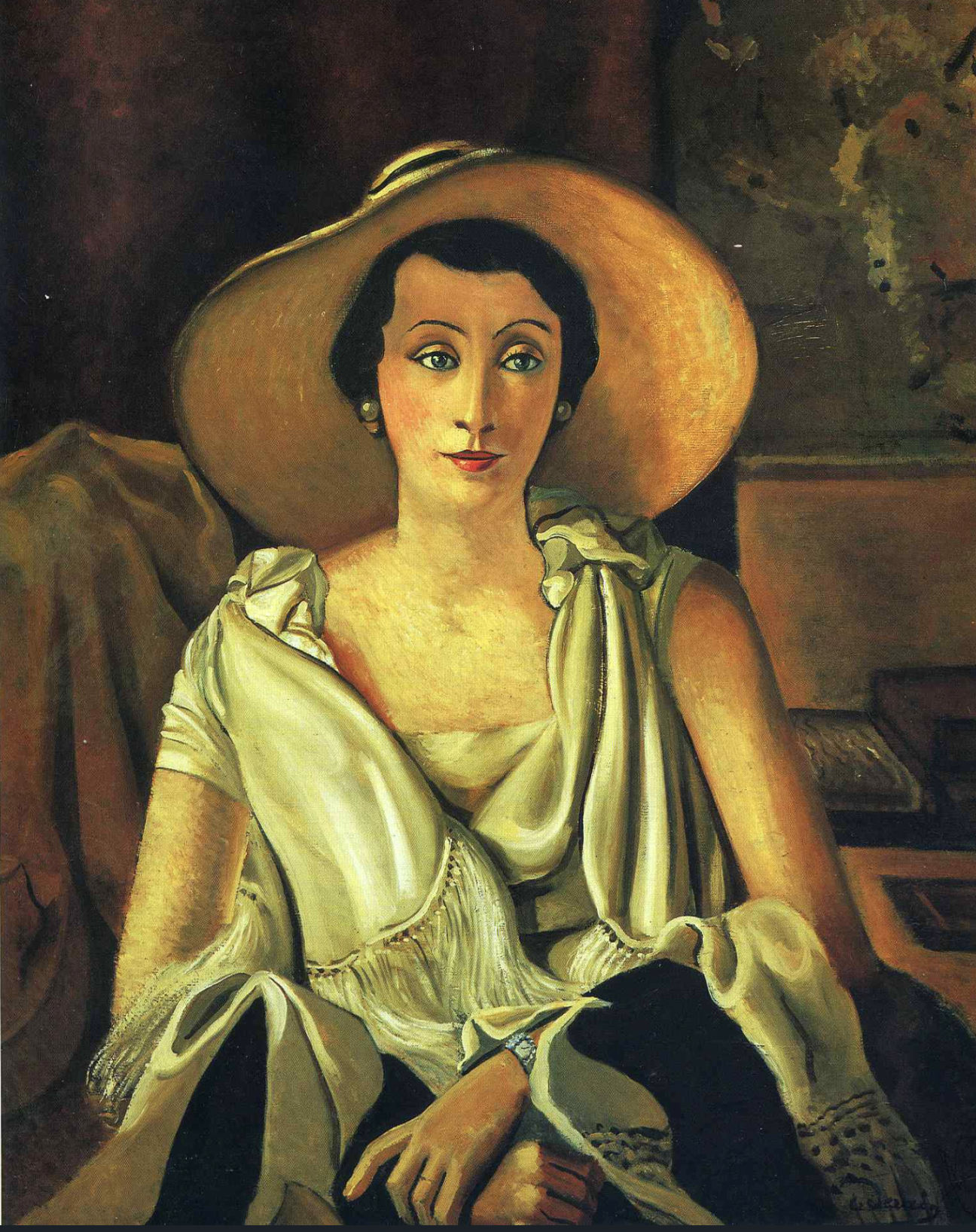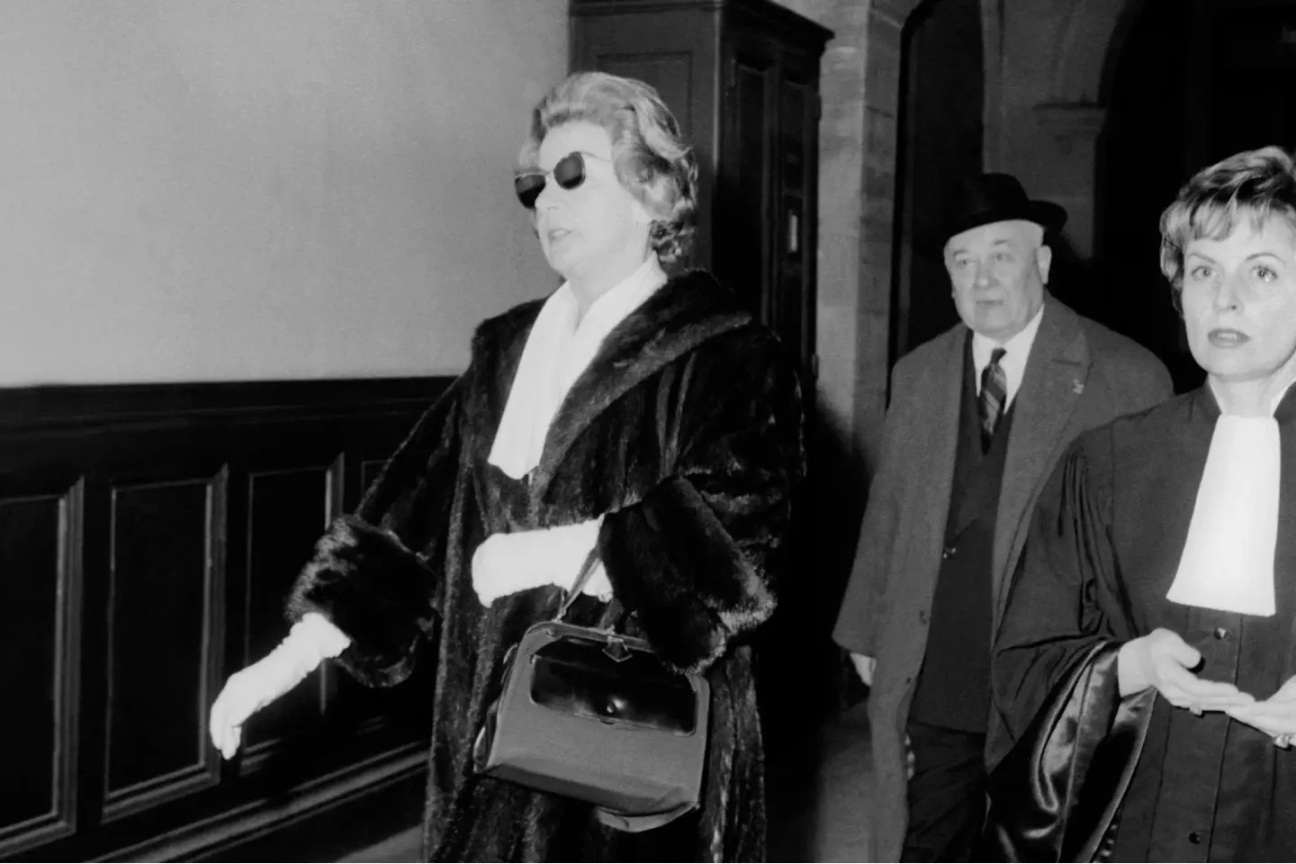
Deep in the basement of Paris’s Musée de L’Orangerie is a display that includes 25 paintings by Pierre-Auguste Renoir, 15 by Paul Cézanne, one by Claude Monet, and 12 by Pablo Picasso. The scale of this collection's beauty, that of Jean Walter and Paul Guillaume, is rivaled only by the dismal nature of its history. Murder-for-hire plots, fake pregnancies, and infidelities mar the records of its former owner, Domenica Guillaume Walter.
Born Juliette Marie Léonie Lacaze, Dominica believed one thing as a child: she deserved a life of silk robes and servants to cater to her every whim. After her family’s fortune was lost, she set her sights on the glittering French Riviera. It was there that she met Paul, who had already made a considerable fortune importing rubber and West African art to France. He was also close friends with the artists of Montmartre and Montparnasse, and dreamed of one day turning his collection into the first French museum of modern art open to the public.
After they were wed, the mystery of Dominica’s background and Paul’s art world connections quickly made the two into a rising Parisian power couple. Cocktails with Europe’s elite class and countless affairs followed—Dominica with potential art clients and Paul with Jean Castelle, who helped introduce him to new artists. Still, they were perfectly content.
Everything changed after the 1929 stock market crash. With no soirées to distract them, Paul spent his days nursing bottles of brandy while Dominica continued her affairs. One night, after finding his wife in the pantry with Jean, a famed architect, Paul gave her an ultimatum: either bear me a child or be written out of my will. Dominica, who was rumored to have had her tubes tied before the marriage so as not to share any inheritance, was left in dire circumstance.

Instead of a child, she settled on a pillow, then multiple, stuffed under her clothes. Paul was none the wiser; the couple slept in separate bedrooms and as Paul continued drinking, he slowly retreated further into himself, away from the marriage, the pregnancy, and this life without his society friends. In 1934, he was admitted to the hospital with a burst appendix. Dominica took the opportunity to buy a baby, a foundling named Jean-Pierre, for 5,000 francs. A few days later, Paul died alone in the ICU, and Domenica was the sole owner of her husband’s vast collection. He never got to meet “his” child.
The less-than-grief-striken widow soon tied the knot with the even wealthier Jean. He pushed her to officially adopt Jean-Pierre, who was now 5. She did, but never accepted him as a son. On the rare occasions that he visited her in Paris, she made him sleep on a mattress under the dining table or, if the room was currently hosting one of her parties, he slept in the bathtub.
Dominica managed to pause her extramarital affairs until 1955, when her advancing rheumatoid arthritis introduced her to Dr. Maurice Lacour. In spite of his questionable medical expertise and rumored involvement in the extreme-right-wing La Cagoules group, Dominica quickly got hooked on his supply and moved the doctor into her and Jean’s apartment.
Soon after, Jean died in a car accident while the three were out in the French countryside. Naturally, there were more rumors about Domenica’s string of young, dead husbands. The fact that she barely mourned his death didn’t help.

Instead, Dominica, Lacour, and her brother drove to Jean’s office and took over his mining business. Three weeks later, they unearthed papers, supposedly written by Jean himself that dismissed his children from the firm and instead appointed Lacour, who Jean had openly detested, as the sole board member.
With the inheritances of two husbands and a loyal drug dealer by her side, there was one last roadblock in her climb to power: Jean-Pierre. He had to die, Dominica decided. While Lacour’s right-wing, underbelly ties seemed an asset, they proved to be the biggest liability. After the hitman he hired discovered the doctor’s fascist sympathies, he flipped sides. Jean-Pierre, the hitman, and Jean’s son together set out to unveil Dominica’s plot.
While Dominica was no stranger to press interest, this was the first time all her schemes received due publicity. Wire tappings, a quick escape to Morocco, and an even quicker return to Paris for a chaotic press conference came in quick succession, with the couple presenting Jean-Pierre as the true villain of the story.
No one bought this fantasy. Lacour was sentenced to six months in prison. And Domenica Walter Guillaume? She received no sentence and no time. Andre Malrou, a friend from Dominica’s more social days, became the minister of culture in France just as she was about to be sentenced and brokered a deal. The investigation would go away, no charges would be pursued, and in return Dominica would sell 147 paintings to the French state for a fraction of their estimated value. These paintings would go one to comprise the Jean Walter and Paul Guillaume collection. In a roundabout way, Paul’s dream of building his own museum collection did come true.










 in your life?
in your life?

